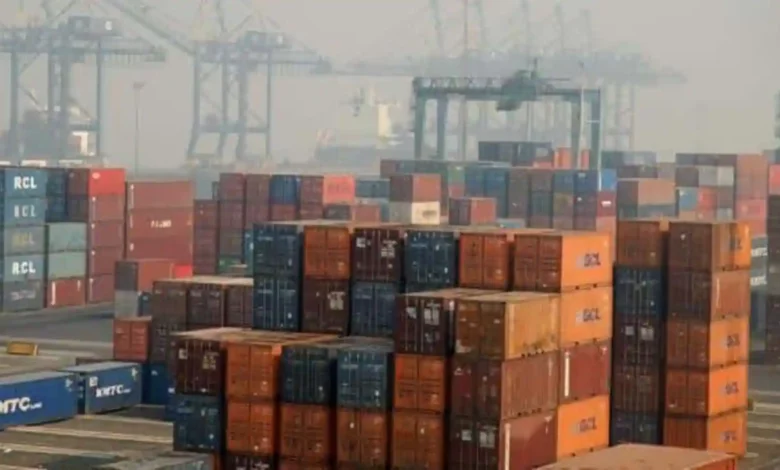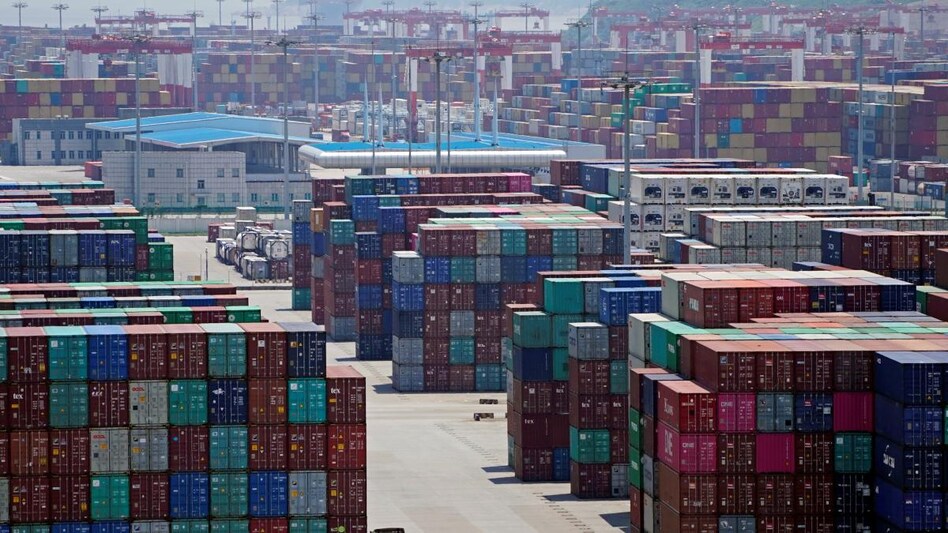In July, the trade deficit reached a record high of $31 billion, while exports decreased by 12% from the previous month.

In July, the trade deficit reached a record high of $31 billion, while exports decreased by 12% from the previous month.
The merchandise trade imbalance for April through July is now $100.01 billion, far higher than the $42.07 billion it was during the first four months of FY22.
As of July, India‘s merchandise trade imbalance surged to a new record high of $31.02 billion, according to BVR Subrahmanyam, the commerce secretary, who spoke on August 2.
The trade imbalance previously reached a record high of $26.18 billion in June.
The deficit in July 2021 was $10.63 billion, roughly a third smaller than the previous month.
The trade ministry released preliminary data showing that July’s merchandise imports were $66.26 billion, up from $46.15 billion in 2016.
When compared to the same month last year, July’s exports of $35.24 billion were “almost stable,” according to Subrahmanyam, who spoke during a briefing.
The secretary said, “The external environment is no longer benign.”

The current increase in India’s trade deficit is a result of the high prices of commodities worldwide. The rupee’s exchange rate has been under pressure recently as a result. It has hit many record lows against the US dollar and first breached the 80-to-dollar mark on July 19.
The Reserve Bank of India makes an effort to lessen volatility despite having a precise exchange rate objective by buying and selling its foreign exchange reserves. Due to its exchange rate defense, India’s foreign exchange reserves are down more than $70 billion from their peak of $642.45 billion, reached on September 3, 2021.
Internal July trade data

July’s exports of goods fell significantly by 12 per cent from June while the import bill remained unchanged.
Despite the subpar export performance in July, Subrahmanyam expressed optimism that merchandise exports would “comfortably” cross the $500 billion threshold in FY23.
In FY22, India exported $429.2 billion worth of goods. Exports have reached $156.41 billion so far in FY23.
According to Subrahmanyam on August 2, “restrictions on exports of wheat, iron and steel, and petroleum products have reined in the export increase.” He also noted that $1 billion to $2 billion of wheat had been kept domestically.
Although it’s crucial to ensure our food security, he continued, “this has decreased the export figures.”
The trade secretary commented further on the decline in exports, stating that exports to Sri Lanka had almost wholly disappeared while exports to Russia had decreased by around half. However, it is anticipated that the RBI’s move to allow trade settlement in rupees will increase exports to these nations.
The only two exports that performed well were rice and electronic items, albeit their totals were modest. While exports of electronic items increased 46% year over year to $1.82 billion in July, rice shipments increased 30% to $0.93 billion.
On the import front, the commerce secretary blamed the high prices of coal and petroleum goods for the import bill’s inflated character.
According to preliminary trade data from the commerce ministry, India imported petroleum goods worth $21.13 billion in July, a 70% increase over the same month last year.
Even more significantly, coal imports increased by 164 per cent to $5.18 billion.
The merchandise trade imbalance for April through July is currently $100.01 billion, a significant increase over the $42.07 billion reported in the first four months of FY22.
For FY22, India’s merchandise trade deficit was $189.5 billion. As a result, at the current pace, the trade deficit might reach $300 billion in FY23.
Mixed results

Exporters are optimistic about the future of their industry.
The Federation of Indian Export Organizations‘ director general, Ajay Sahai, noted that although commodity prices are falling, consumers are leaving China in search of low-cost goods.
“These two reasons are encouraging us about the performance of our exports in the face of challenging geopolitical concerns.”
Nayar anticipates that falling commodity prices will eventually reduce the trade imbalance. However, it is still essential that exports of goods and services stay robust in the face of concerns about a global recession.
According to Subrahmanyam, India should be concerned because the recession is expected to hit some of its biggest export markets, including the US and Europe.




